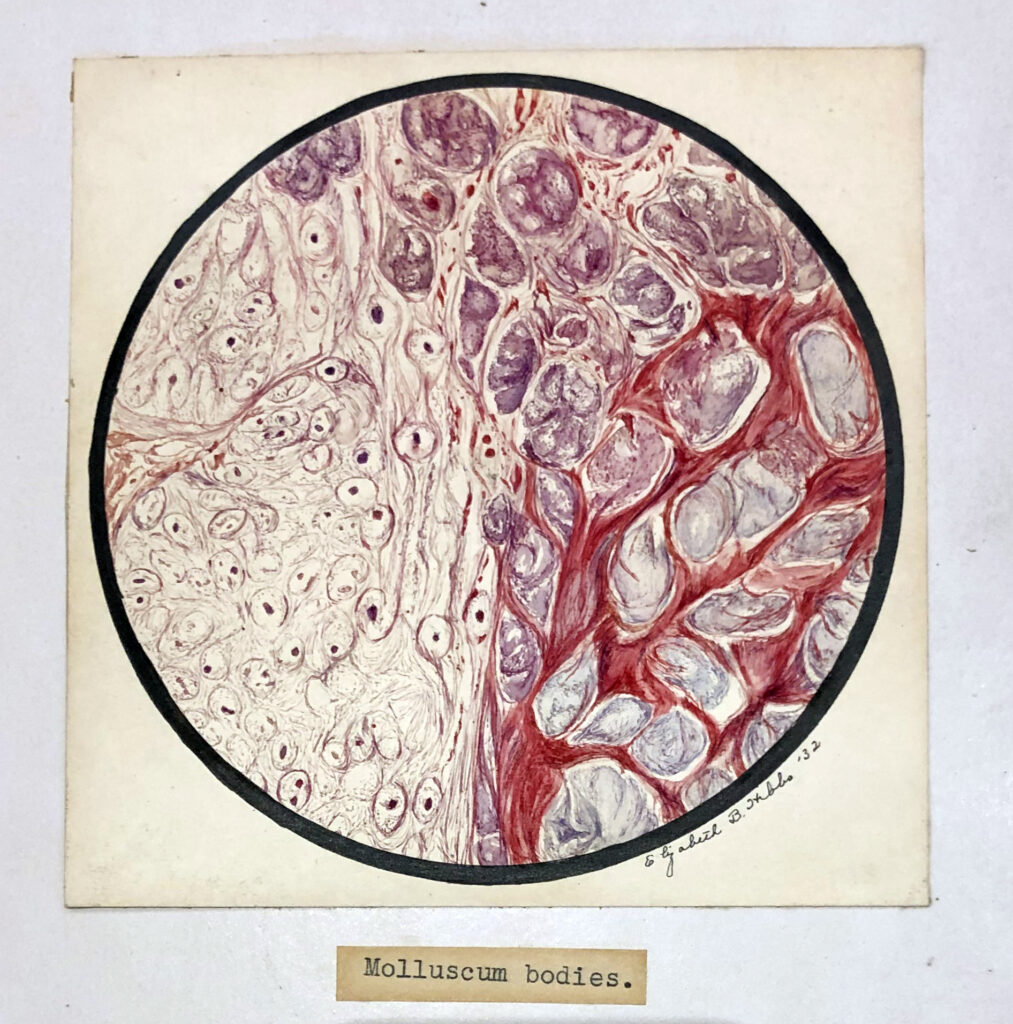
By Kendra H. Oliver
Art has always been a part of science—from the first field drawings of prehistoric cave paintings to today’s 3D computer-generated protein structures. The Department of Illustration at Vanderbilt University provides a prime example of the power of visualization. Although this department no longer exists, its influence helped to articulate and accelerate Vanderbilt’s biomedical research excellence and education.
Susan Heiskell Wilkes, trained by the founder of the field of medical illustration, Max Brodel, was hired in 1925 by Dr. Canby Robinson to head the first medical illustration department at Vanderbilt University Medical Center. Wilkes, in turn, trained Robert Vantrease and worked with him to visually represent medical and anatomical subjects with accuracy and detail. As medical illustrators, they employed their artistic skills and anatomical knowledge to create illustrations, diagrams, and visual aids that enhanced comprehension, aided in diagnosis, explained surgical procedures, and facilitated student and patient education.
The art of science visualization has been a vital component of the success of biomedical innovation at Vanderbilt. Visuals possess emotional and intellectual power, essential for effective scientific communication across diverse audiences and purposes. Emotionally, visuals can evoke curiosity, empathy, and a sense of wonder, fostering engagement and connection with scientific information. Intellectually, visuals simplify complex concepts, facilitate comprehension, and enhance retention, enabling effective communication of scientific ideas to individuals with varying levels of expertise. These are some of the reasons why the ArtLab and Vanderbilt Institute for Infection, Immunology and Inflammation’s Artist-in-Residence program has been so successful.
As the Basic Sciences transdisciplinary space, ArtLab, founded and directed by Associate Professor of Pharmacology Kendra H. Oliver, has fostered collaboration between art and science since 2017. Serving as an experimental platform where scientists, artists, and researchers come together to explore new ways of understanding and interpreting the world, ArtLab has fomented the creation of multiple transdisciplinary programs. The VI4 Artist-in-Residence program, co-led by Eric Skaar, professor of pathology, microbiology and immunology, with internal support and external funding from the Burroughs Wellcome Fund, has brought together artists and scientists to question and discuss the latest research through visual science communication. Art-science collaborations have yielded extraordinary results, contributing to academic discourse, public engagement, and the breakdown of traditional academic silos by encouraging innovative ways of thinking.
Technology integration, new artistic mediums, visualizations, and communication will likely continue to be criteria for success in biomedical innovation.

This figure was created by Emily Layton, BS’20, an ArtLab Artist-in-Residence between 2018 and 2022, for the Wolbachia Project, an educational outreach initiative designed to give students hands-on research experience. The figure shows a fly and its possible four sources of DNA: 1) its own nuclear DNA, 2) its own mitochondrial DNA, 3) DNA from Wolbachia, a widespread bacteria that prevents the replication and transmission of viruses, and 4) DNA from bacteriophages, viruses that infect bacteria such as Wolbachia.